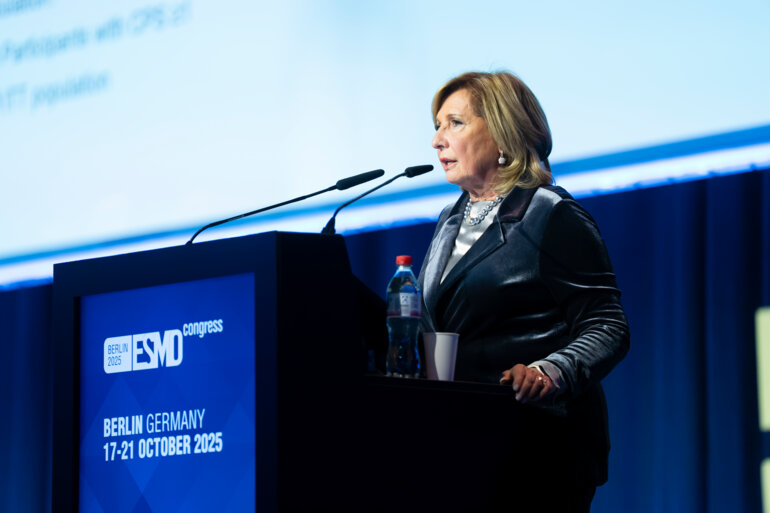A small Japanese study provides useful insights on determining the role of these agents in cancer care, but studies in larger, more diverse populations are needed
An analysis presented at the ESMO Gynaecological Cancers Congress 2025 (Vienna, 19–21 June), highlighted patterns of expression of different antibody–drug conjugate (ADC) targets in 80 primary high-grade serous ovarian cancer (HGSOC) samples (Abstract 71O).
In the study, tissue microarray-determined membrane expression of FRα and HER2 were found to be largely mutually exclusive, with only one HER2-positive result in the FRα-high group. There was one HER2-positive case in the FRα-low group and three in the FRα-ultralow group. The majority (91%) of the 58 FRα/HER2-negative cases showed high expression of at least one of CDH6, TROP2 or B7-H4. Nevertheless, there were no significant associations between expression levels of these biomarkers.
As the number of ADCs being investigated in ovarian cancer is growing, according to Prof. Ana Oaknin from Vall d'Hebron University Hospital, Barcelona, Spain, studies like the one presented in Vienna provide some useful insights on the role of these agents in the clinical scenario. “For instance, we need to understand how the different antigens overlap across a particular tumour. If some targets exclude the expression of others such as FRα and HER2, then this information could be used to guide treatment selection,” she explains. “In the study, expression levels of some antigens were lower than have been shown previously, which may be due to different analysis methods and/or the ethnicity of the studied populations. Studies in larger, more diverse populations are required to confirm the hypotheses generated.” She points out that results on whether expression of individual targets changes across the treatment journey would be valuable.
“There are still a number of questions crucial to determining the place of ADCs in ovarian cancer treatment,” Oaknin concludes, “For example, what level of overexpression is necessary for ADC activity and is higher target expression linked to higher response? As most of the ADCs currently under investigation have the same payload, we also need to think about sequencing and consider the impact on resistance.”
Programme details
Hamagawa K, et al. Profiling antibody-drug conjugate (ADC) target expression in high-grade serous ovarian cancer (HGSOC): Opportunities for targeted treatment strategies. ESMO Gynaecological Cancers Congress 2025, Abstract 71O
Proffered Paper Session, 19.06.2025, h. 14:00 – 15:30, Hall D







